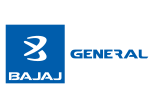What is the Endowment Plan And How Does It Work?
Table of Contents
Endowment plans are a type of life insurance coverage that is unique. Investment combined life insurance plans are another name for these products. Endowment policies offer a maturity reward to the life insured if they live to the end of the policy period. This technique enables you to invest your money over time and build a future corpus. One of the main characteristics of endowment plans is that they allow for wealth appreciation, i.e., the insurance company declares yearly bonuses on the policy on the basis of the insurance provider. In the case of the life assured's untimely death within the policy's term, endowment policies provide financial security to the life assured's family.

What Is an Endowment Policy?
Endowment insurance is a type of life insurance that combines insurance coverage with a savings strategy. It enables you to save regularly over a certain length of time in order to receive a lump sum payment at policy maturity if the policyholder survives the duration of the policy. According to the policy terms and circumstances, the policyholder receives his or her sum assured at a future period. However, if the policyholder dies unexpectedly, the insurance company will pay the sum assured (plus any bonuses, if any) to the policyholder's nominee. It can also be used to protect yourself or your family after retirement or to meet a variety of financial demands.
How Does an Endowment Plan Work?
If you have an endowment plan, you pay premiums over time and gain a bonus plus benefits when you reach retirement age. The insured money is released in its whole at maturity, making it more appealing to policyholders who want a substantial sum in one go. Premiums are determined based on the investor's chosen Sum Assured on Maturity.
For the term you specify, you pay a premium. At maturity, you'll receive Maturity Benefit, which is the Sum Assured on Maturity plus any accrued interest. Your premium is determined by a number of factors, including your age, policy duration, premium payment method, and Sum Assured. It should be noted that premiums for standard and substandard lifestyles would differ. The administrative expenditures of insurance are paid a proportion of the premium, while the sum assured is paid an equal amount. The remainder of the premium is put into investments. Each year, invested capital creates a certain amount of profit. This profit can be considered a bonus. The bonus is usually calculated as a percentage of the guaranteed sum in the majority of cases. It's possible that insurers will award bonuses every year, but it's not guaranteed. This incentive was well-received as soon as it was made public. This incentive becomes a guaranteed advantage of the plan once it is made public. The incentive is delivered to the employee over time, rather than immediately.
Endnotes
Through endowment programs, your premiums are used to generate risk-free returns. It provides both maturity and death benefits to preserve the investor's financial security in the case of unforeseen circumstances. As a result, investing in an endowment plan is a good move, and the information offered above will assist you in understanding it. Endowment plans are participating in life insurance programs. After reading the following article, you will have a better understanding of how an endowment plan operates.
Do read - 5 Points to Consider When Purchasing an Endowment Policy



























































